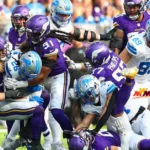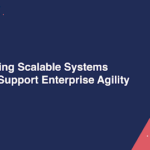You may spend hours working on tweaking your resume at Social Portfolios! Obsessing over bullet points, keywords, and formatting, only for it to disappear in the Applicant Tracking System. Sound familiar?
That resume you have worked so hard on? It is quickly losing its relevance and effectiveness.
We are living in a time where your digital presence tells the story better than any document ever could. In fact, if someone has Googled you before reading your resume, then chances are that your social media profile has already made the first impression.
This is the age of social portfolio- your social media profile is your new resume. It is more alive, more dynamic, and more persuasive.
Connect with related reads offering practical tips you can use right now.
Why Traditional Resumes Are Quietly Dying
Resumes generally come from a template! They are predictable and generic. Every applicant looks detail-oriented and result-driven- you will find these terms on most resumes. However, none of that shows who you really are or how you think- and thinking is what companies are really hiring for.
Meanwhile, your LinkedIn posts, YouTube Shorts, or Instagram reels are the ones that show process. They represent your energy and show your evolution. In short, they show you in real-time.
This is why traditional resumes are on their way out. They have become rather static in a world that moves at the speed of content.
Your Content is the New Credential
Think about the last time you hired someone (or chose to work with someone). You probably did not just read their resume. You looked them up online, too. You may have watched their YouTube walkthrough. Maybe you read a case study thread they posted on X, or you found their personal site on Medium.
This is a social portfolio! It is the living proof of what you can do- not just what you say you can do.
And the platforms are making it easier to show that. LinkedIn lets you pin featured content. Instagram lets you create story highlights of your past projects. YouTube is great for creator who want to show their skills through tutorials, live commentary, or any other such content format.
Some creators, in fact, even use platforms like YouTubestorm to give their early videos a little bit of visibility. The purpose is to compete with noisy algorithms and ensure that the content they have worked hard on gets seen. It does not mean you are trying to buy influence. It is to start conversations and increase engagement so that you get more opportunities in the future.
DMs are Your New Cover Letter
No one is reading those three-paragraph-long cover letters anymore. But do you know what gets read? A thoughtful DM that enables you to express interest in the opportunity the particular brand or business is offering.
That message, when you combine it with a visible track record across your profile- including your proof of work, clear positioning, and even some engaged comments- has more impact than any cover letter.
Your content does the pre-selling for you. By the time someone replies to your message, they already feel like they know you.
How to Build a Social Portfolio that Acts as Your Resume
You do not need an incredibly large following for your social media presence to serve as your resume. You just need clarity and consistency,
Here is how you can start!
Clarify Your Bio
Talk about who you can help. What problems can you solve? Just keep it simple
Pin Your Proof
Pin posts, videos, or links that show your best work. This can serve as the “Top 3” slide on your portfolio deck.
Create Process Content
Show how you work. Walk through your design choices and explain your marketing strategy. Share the lessons you have learned along the way to keep it realistic.
People do not hire based on outcomes. They also hire based on how you think and work.
Post with Consistency and Frequency
While you do not have to go viral, you do need to be visible. Two thoughtful posts in a week are more than enough to build trust.
Engage intentionally
Comment, collaborate, start conversations where and when possible. This does not only help you build a feed; it also helps you build a reputation.
Final Thoughts
Your resume may check all the right boxes, but it is your social portfolio that can open doors for you in today’s times.
It helps you build credibility, connection, and trust – and that too in real time. It shows prospective clients, employers, and collaborators not just that you can do the job, but that you are already doing it.
So, stop treating your profile like your bio. Instead, think about how you can make it your most powerful business asset. In today’s world, the people who show their value are the ones who manage to win- not the ones who just write about it.
Dive deeper—explore more to uncover ideas shaping tomorrow’s world now.






